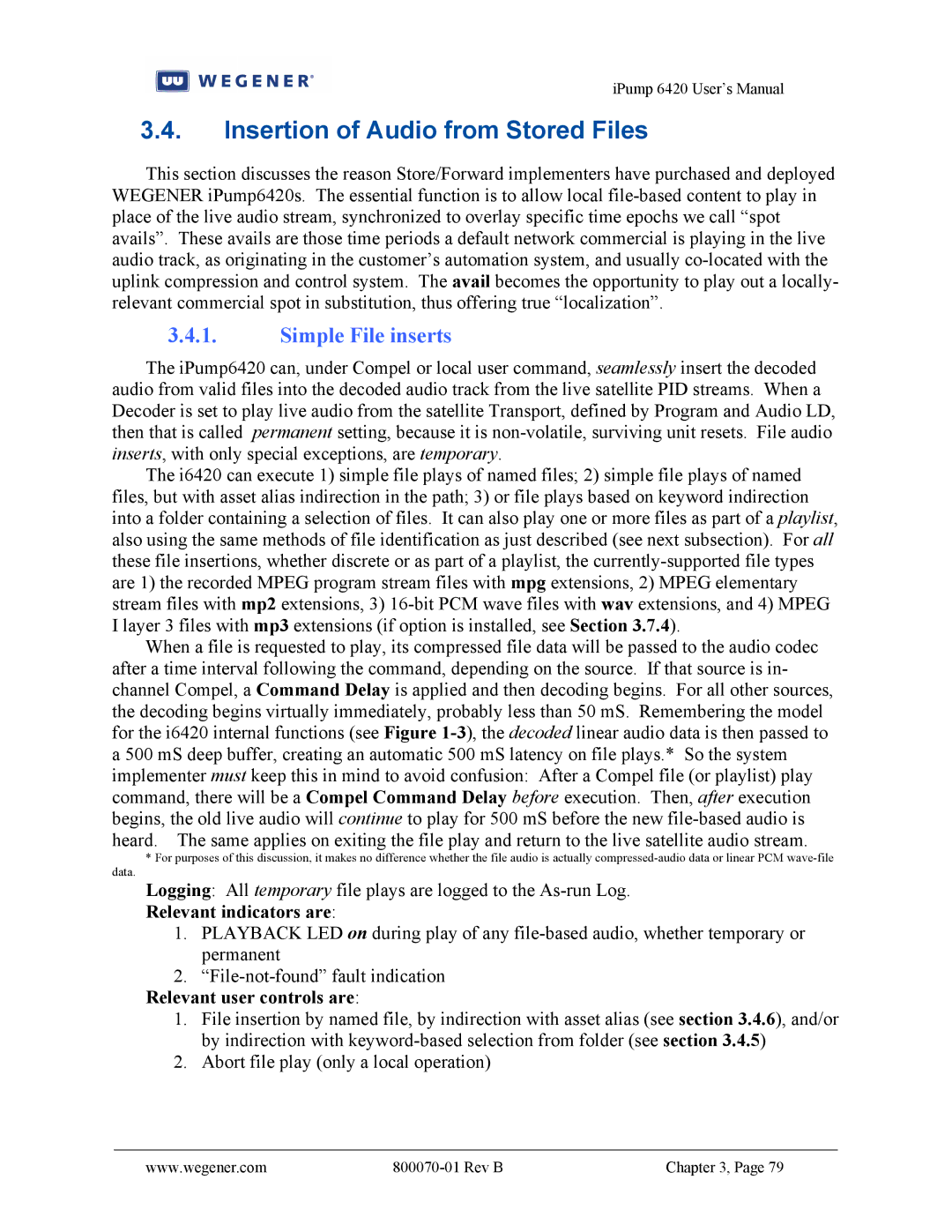
iPump 6420 User’s Manual
3.4.Insertion of Audio from Stored Files
This section discusses the reason Store/Forward implementers have purchased and deployed WEGENER iPump6420s. The essential function is to allow local
3.4.1.Simple File inserts
The iPump6420 can, under Compel or local user command, seamlessly insert the decoded audio from valid files into the decoded audio track from the live satellite PID streams. When a Decoder is set to play live audio from the satellite Transport, defined by Program and Audio LD, then that is called permanent setting, because it is
The i6420 can execute 1) simple file plays of named files; 2) simple file plays of named files, but with asset alias indirection in the path; 3) or file plays based on keyword indirection into a folder containing a selection of files. It can also play one or more files as part of a playlist, also using the same methods of file identification as just described (see next subsection). For all these file insertions, whether discrete or as part of a playlist, the
When a file is requested to play, its compressed file data will be passed to the audio codec after a time interval following the command, depending on the source. If that source is in- channel Compel, a Command Delay is applied and then decoding begins. For all other sources, the decoding begins virtually immediately, probably less than 50 mS. Remembering the model for the i6420 internal functions (see Figure
* For purposes of this discussion, it makes no difference whether the file audio is actually
data.
Logging: All temporary file plays are logged to the
Relevant indicators are:
1.PLAYBACK LED on during play of any
2.
Relevant user controls are:
1.File insertion by named file, by indirection with asset alias (see section 3.4.6), and/or by indirection with
2.Abort file play (only a local operation)
www.wegener.com |
| Chapter 3, Page 79 |
